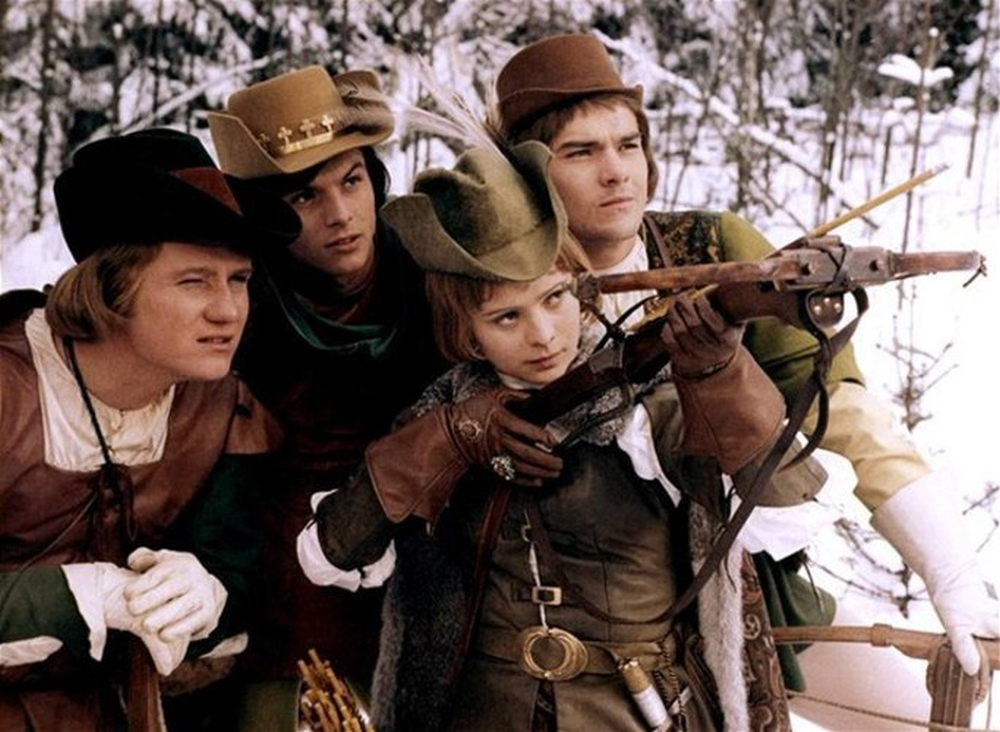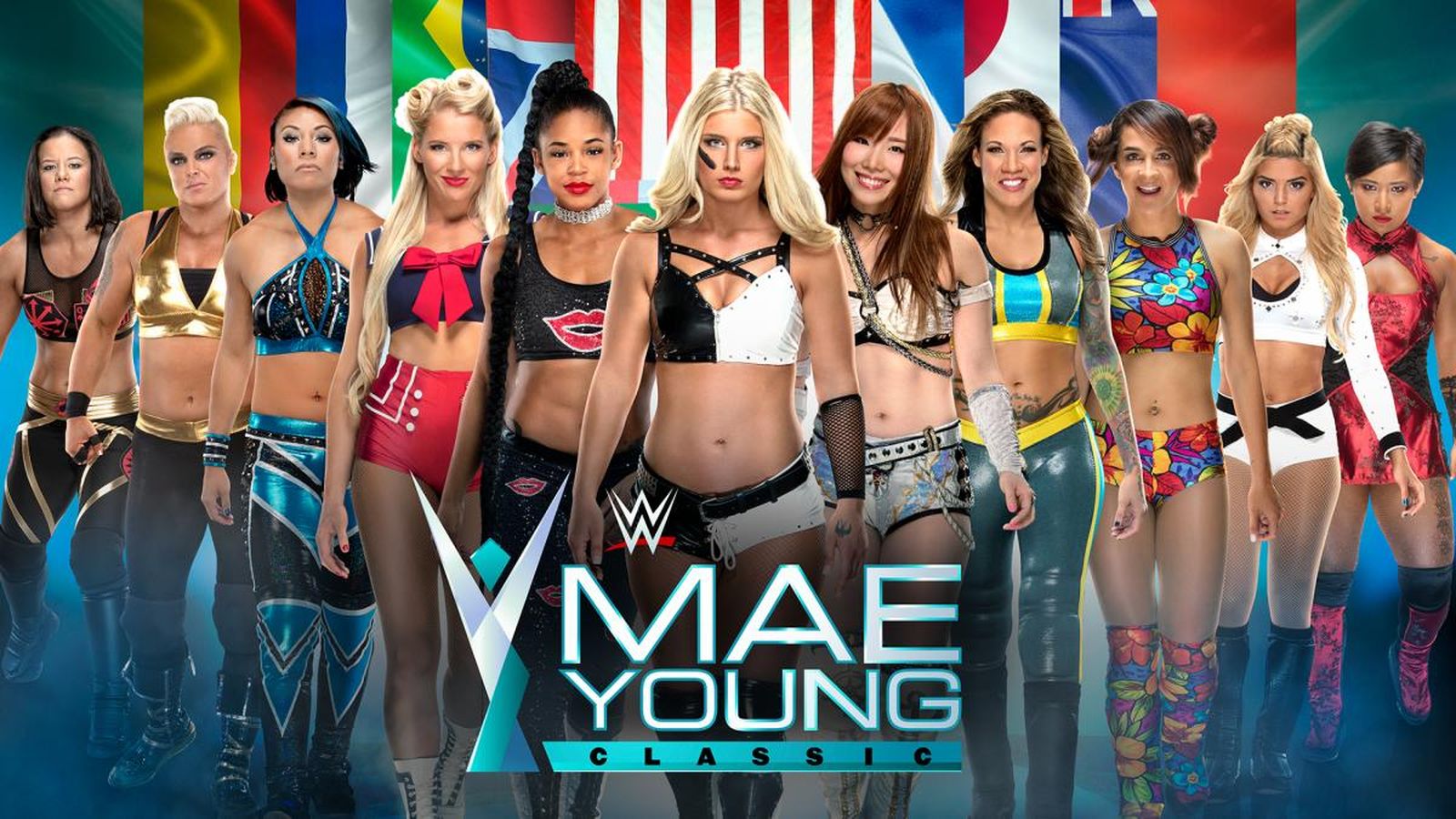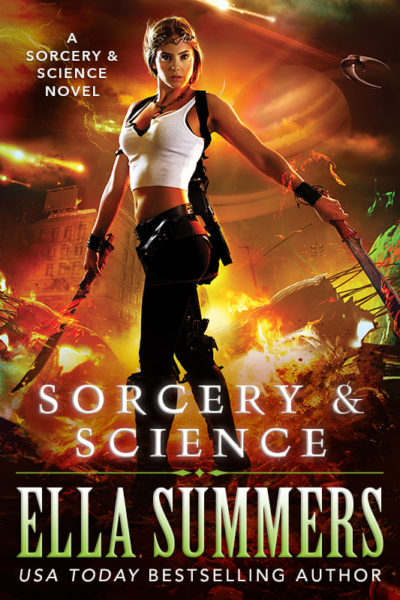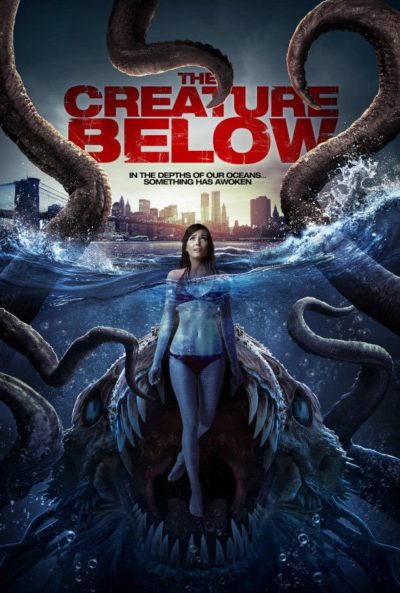★★
“Secondary staged carnage.”
 After Megan (Watson) loses her job, boyfriend and the roof over her head in the same day, she decides to head off to Atlanta, where friend Amanda (Riggs) puts her up for a bit. Amanda’s boyfriend (Rollins) is manager at a strip club, and gives Megan a job as a cocktail waitress. But after realizing the gap in earnings between those employees who keep their clothes on, and those who don’t, Megan decides to make the jump into strip-tease. This rapidly brings her into conflict with Jazz (Brown), another stripper who rules the club through terror and intimidation, along with the help of her cronies. She takes it upon herself to make Megan’s life hell. However, she can only be pushed so far, before Megan and Amanda, push back.
After Megan (Watson) loses her job, boyfriend and the roof over her head in the same day, she decides to head off to Atlanta, where friend Amanda (Riggs) puts her up for a bit. Amanda’s boyfriend (Rollins) is manager at a strip club, and gives Megan a job as a cocktail waitress. But after realizing the gap in earnings between those employees who keep their clothes on, and those who don’t, Megan decides to make the jump into strip-tease. This rapidly brings her into conflict with Jazz (Brown), another stripper who rules the club through terror and intimidation, along with the help of her cronies. She takes it upon herself to make Megan’s life hell. However, she can only be pushed so far, before Megan and Amanda, push back.
A classic grindhouse title, which somewhat delivers on its premise: nearer to the “massacre” than the “stripclub” side, I’d say. Indeed, it’s rather more restrained in terms of nudity than I’d have expected. The gore, on the other hand, is plentiful in volume, if not necessarily quality: some of the special effects count as “special” in roughly the same way as “special education”. The story is basic to the point of simplistic: Megan is somewhat sympathetic, yet you’re never brought along on her descent into psychotic violence. It’s more like a switch is suddently flipped: I can imagine the film-makers thinking, “Right, 15 minutes to go, enough of this characterization nonsense, time for the rampage sequence.” It’s still about 20 minutes too much, and this perhaps needed a better outside hand, to cut down on what often feels self-indulgent fan fiction.
The most interesting character in all this is probably Jazz. If Brown looks familiar, you should probably be somewhat ashamed of yourself. That’s because she was previously known as Misty Mundae, and starred in a large number of films with titles like Gladiator Eroticus, Lord of the G-Strings and Spiderbabe. About which, I know absolutely nothing. :) She has now moved on from such things, and clearly knows her way around a script in a way that Watson (understandably, this being her feature debut) doesn’t. Jazz thus becomes hateable, in the same way Megan should have been likeable. She’s a vicious, coke-snorting bitch, who treats the club as if it were high school, and Jazz head cheerleader. A great villain, they should have made the film around her.
As a result, Jazz’s death is about the only one which packs any kind of emotional impact – it’s not too dissimilar to one I saw in La Esquina del Diablo, actually. The rest are mostly exercises in sloppy gore – as noted, some of which work, others which don’t. For instance, the (male) death by crowbar rape is perhaps more likely to put you off tacos than anything. [They could at least have used a fireplace implement, and had Megan cheerily quip, “How’s that for strip poker?”] And why does Amanda enthusiastically join in the mayhem? No credible explanation is ever offered. It’s all very clearly a small-budget effort, made with more passion than anything else. Unfortunately, outside of Brown, it does little to escape the obvious limitations imposed by its resources.
Dir: Bob Clark
Star: Alicia Watson, Erin Brown. Courtney Riggs, Stefan Rollins
a.k.a. Night Club Massacre





 Rarely, if ever, have I seen a film so thoroughly derailed by one bad decision. There’s potential here, and those involved have some decent track records as well. Director Lyde did the last two installments of the Mythica saga, including the best one,
Rarely, if ever, have I seen a film so thoroughly derailed by one bad decision. There’s potential here, and those involved have some decent track records as well. Director Lyde did the last two installments of the Mythica saga, including the best one, 
 ★★★★
★★★★ The WWE and women’s wrestling have had a fractious relationship over the years. For every two steps forward, there has been one – or, more often, two – backward. But under Executive Vice President of Talent Paul M. Levesque, better known by his ring-name of Triple H, there have been hopeful signs of progress. Perhaps the biggest of late was WWE staging an all-woman tournament this year, featuring 32 wrestlers from 13 different countries. This was named the Mae Young Classic, in honour of one of the field’s pioneers and longest-serving members; she wrestled from 1939 through 2008, and passed away in 2014.
The WWE and women’s wrestling have had a fractious relationship over the years. For every two steps forward, there has been one – or, more often, two – backward. But under Executive Vice President of Talent Paul M. Levesque, better known by his ring-name of Triple H, there have been hopeful signs of progress. Perhaps the biggest of late was WWE staging an all-woman tournament this year, featuring 32 wrestlers from 13 different countries. This was named the Mae Young Classic, in honour of one of the field’s pioneers and longest-serving members; she wrestled from 1939 through 2008, and passed away in 2014.
 The blurb for this one reads, “Terra Cross is just your typical paranormal princess. She plays poker with goblins and leprechauns. She savors her morning muffin from the Pacific Sunrise Bakery in suburban California. She solves galactic crime cases. And on a particularly wild day, she can even see into the future.” It is somewhat inaccurate, at least as far as this novel goes. I don’t recall any poker at all, muffins appear once, and as for the crime-solving… Well, sorta but not really. There is, however, likely good reason, since the novel is a prequel to Summers’s “Sorcery and Science” series, in which I presume Terra does more of the above.
The blurb for this one reads, “Terra Cross is just your typical paranormal princess. She plays poker with goblins and leprechauns. She savors her morning muffin from the Pacific Sunrise Bakery in suburban California. She solves galactic crime cases. And on a particularly wild day, she can even see into the future.” It is somewhat inaccurate, at least as far as this novel goes. I don’t recall any poker at all, muffins appear once, and as for the crime-solving… Well, sorta but not really. There is, however, likely good reason, since the novel is a prequel to Summers’s “Sorcery and Science” series, in which I presume Terra does more of the above. As a joke I saw on Facebook went, “With all these self-driving cars, it won’t be long before there’s a country song about your truck leaving you.” The rise of smart vehicles is inevitable, and likely, so are other films like this, which falls somewhere between Christine and 2001. In this case, mother Sandra (Bowden) is driving to see her husband, whom she suspects of cheating on her, with their young child David (played by the two Hodges brothers, whom I’m assuming are twins!) in the back seat. Her car is the state-of-the-art Monolith, equipped with every safety feature imaginable, and then some. But a series of events – a diversion, an encounter with roadkill on the hoof, and Sandra giving David her smartphone as a distraction – lead to a tricky situation. She is stuck on a remote desert road, outside of a car that has now entered its impenetrable “vault mode”, with David trapped in its interior.
As a joke I saw on Facebook went, “With all these self-driving cars, it won’t be long before there’s a country song about your truck leaving you.” The rise of smart vehicles is inevitable, and likely, so are other films like this, which falls somewhere between Christine and 2001. In this case, mother Sandra (Bowden) is driving to see her husband, whom she suspects of cheating on her, with their young child David (played by the two Hodges brothers, whom I’m assuming are twins!) in the back seat. Her car is the state-of-the-art Monolith, equipped with every safety feature imaginable, and then some. But a series of events – a diversion, an encounter with roadkill on the hoof, and Sandra giving David her smartphone as a distraction – lead to a tricky situation. She is stuck on a remote desert road, outside of a car that has now entered its impenetrable “vault mode”, with David trapped in its interior. After a long absence, Wynonna Earp (Scrofano) returns to her home town of Purgatory, near the Rockies. There, we discover the truth about the death of her father and disappearance of her sister, events which precipitated Wynonna’s departure. Turns out the great-great-granddaughter of the legendary Wyatt Earp has a supernatural duty to fulfill, using her ancestor’s equally legendary 16-inch barrel “Peacemaker” revolver. Wyatt kept demons known as “revenants” in check, and the mission has been passed down the family line since, with Wynonna the current incumbent. Fortunately, mystical borders keep the revenants within the “Ghost River Triangle,” and she has the help of Deputy Marshal Xavier Dolls (Anderson), an agent in the “Black Badge” division of the US Marshals Service; Doc Holliday (Rozon), the now-immortal former friend of Wyatt; and Wynonna’s kid sister, Waverly (Provost-Chalkley).
After a long absence, Wynonna Earp (Scrofano) returns to her home town of Purgatory, near the Rockies. There, we discover the truth about the death of her father and disappearance of her sister, events which precipitated Wynonna’s departure. Turns out the great-great-granddaughter of the legendary Wyatt Earp has a supernatural duty to fulfill, using her ancestor’s equally legendary 16-inch barrel “Peacemaker” revolver. Wyatt kept demons known as “revenants” in check, and the mission has been passed down the family line since, with Wynonna the current incumbent. Fortunately, mystical borders keep the revenants within the “Ghost River Triangle,” and she has the help of Deputy Marshal Xavier Dolls (Anderson), an agent in the “Black Badge” division of the US Marshals Service; Doc Holliday (Rozon), the now-immortal former friend of Wyatt; and Wynonna’s kid sister, Waverly (Provost-Chalkley). The mad scientist has been a staple of horror/SF for almost 200 years, since Victor Frankenstein first cranked up his machine. The worlds of literature and cinema have frequently returned to it since. A survey showed mad scientists or their creations to be the threat in 30% of horror films over a fifty-year period, and examples from one or other, include Dr. Moreau, Dr. Jekyll, Herbert West, and Rotwang in Metropolis. But they have been almost exclusively male: after Frankenstein, it was 75 years before any comparable female character existed, the title character in George Griffith’s Olga Romanoff, from 1893. They have been rare ever since, with only the occasional entry such as Lady Frankenstein to break male domination.
The mad scientist has been a staple of horror/SF for almost 200 years, since Victor Frankenstein first cranked up his machine. The worlds of literature and cinema have frequently returned to it since. A survey showed mad scientists or their creations to be the threat in 30% of horror films over a fifty-year period, and examples from one or other, include Dr. Moreau, Dr. Jekyll, Herbert West, and Rotwang in Metropolis. But they have been almost exclusively male: after Frankenstein, it was 75 years before any comparable female character existed, the title character in George Griffith’s Olga Romanoff, from 1893. They have been rare ever since, with only the occasional entry such as Lady Frankenstein to break male domination.
 I guess there is at least something logical about this, in how its heroine, Maggie Lee, becomes the assassin of the title. She takes on her first contract to pay the medical bills of her niece, left in a coma after a car accident which killed her parents and injured Maggie. That’s the kind of motivation which I can see, causing a person to take desperate steps. Unfortunately, it’s a rare island in a sea of largely implausible plotting and uninteresting characters.
I guess there is at least something logical about this, in how its heroine, Maggie Lee, becomes the assassin of the title. She takes on her first contract to pay the medical bills of her niece, left in a coma after a car accident which killed her parents and injured Maggie. That’s the kind of motivation which I can see, causing a person to take desperate steps. Unfortunately, it’s a rare island in a sea of largely implausible plotting and uninteresting characters.